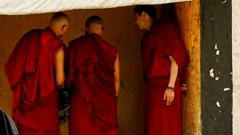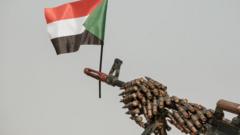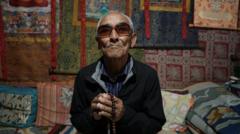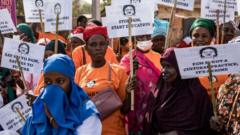As the Dalai Lama celebrates his 90th birthday, Tibet remains under tight control from the Chinese government, leading to whispers of defiance among locals. The Kirti monastery, a symbol of Tibetan resistance, faces increasing surveillance and repression. While the Dalai Lama affirms a succession plan, Beijing seeks to impose its vision on Tibetan Buddhism, raising questions about the future of Tibetan identity and autonomy.
Tibet Remains Under Surveillance as Dalai Lama Turns 90 Amid Calls for Autonomy

Tibet Remains Under Surveillance as Dalai Lama Turns 90 Amid Calls for Autonomy
The Dalai Lama's 90th birthday sparks reflections on ongoing repression in Tibet, where resistance continues despite strict Chinese oversight and mounting tensions.
The 90th birthday of the Dalai Lama brings to the forefront the enduring struggle for Tibetan rights and recognition—a challenge exacerbated by stringent surveillance and government control in the region. Observations from the Kirti monastery in Aba, Sichuan province, underline the precarious situation faced by local Tibetans, who communicate their dissent quietly amidst an atmosphere of oppression.
A monk at the Kirti monastery, emblematic of Tibetan resistance for decades, warns of the risks involved in speaking openly. Fears of repercussions loom as the Chinese Communist Party has cemented a physical presence within the monastery grounds, highlighting the clash between spiritual devotion and state scrutiny. The police station erected at the monastery’s main entrance, complemented by a web of surveillance cameras, exemplifies the tight grip that Chinese authorities maintain.
Since China's annexation of Tibet in 1950, the region has seen a mixture of economic development and cultural erosion. While infrastructure improvements, such as roads and railways, have been touted as progress, Tibetan exiles claim these advancements come alongside increased military presence and diminishing freedoms. Despite the harsh governmental stance, subtle acts of defiance persist. The history of self-immolations and uprisings in places like Aba underscores the ongoing struggle for autonomy and cultural preservation.
With the Dalai Lama's recent confirmation of a succession plan, Tibetans are caught between hope and trepidation. While the Dalai Lama has suggested that his successor will be selected from outside China, Beijing has long asserted its authority over the religious succession—a point of contention that could further inflame tensions between Chinese officials and Tibetan believers. Previously, the Communist Party appropriated the role of the Panchen Lama, leading to further skepticism among Tibetans who view this as an attempt to dilute their cultural identity.
The contrasting realities of Tibetans within and outside China create a complex landscape. Many living under Beijing’s rule have limited access to information and are subjected to heavy state propaganda. Consequently, the narrative within Tibet remains largely unexamined and controlled. As Tibetans engage in their traditions, a silent battle for identity plays out against a backdrop of strict regulations that govern education, religious instruction, and cultural expression.
Renowned scholars warn that China’s educational policies may fundamentally alter the fabric of Tibetan Buddhism. Restrictions now force children to attend state-run schools that can undermine their cultural ties and religious education, diverging significantly from long-standing practices where monasteries served as community schools.
Amidst these challenges, the Dalai Lama’s legacy continues to inspire Tibetans, igniting reflection on their cultural heritage as they navigate an uncertain future. The upcoming succession holds significant implications for the continuity of Tibetan identity, inviting broader scrutiny of how external influences might reshape the cultural landscape.
Ultimately, as the Dalai Lama celebrates his milestone birthday, the question looms—will Tibetans retain their rich cultural identity amid the pressures of assimilation, or will they adapt to a narrative dictated by foreign powers? The silent resilience of Tibetans may hold the key to preserving their heritage, but the road ahead is fraught with challenges.

















